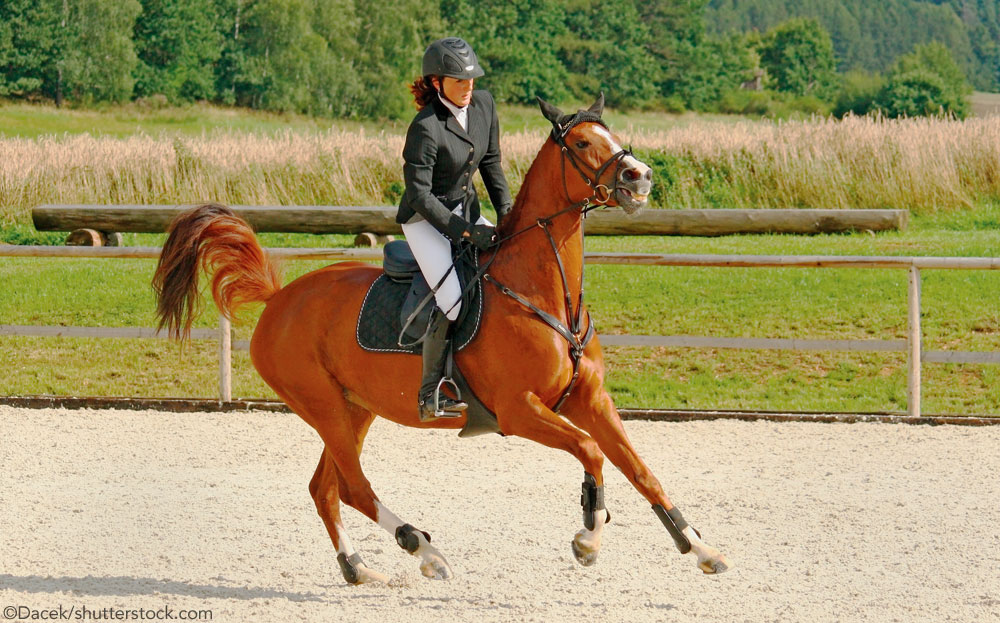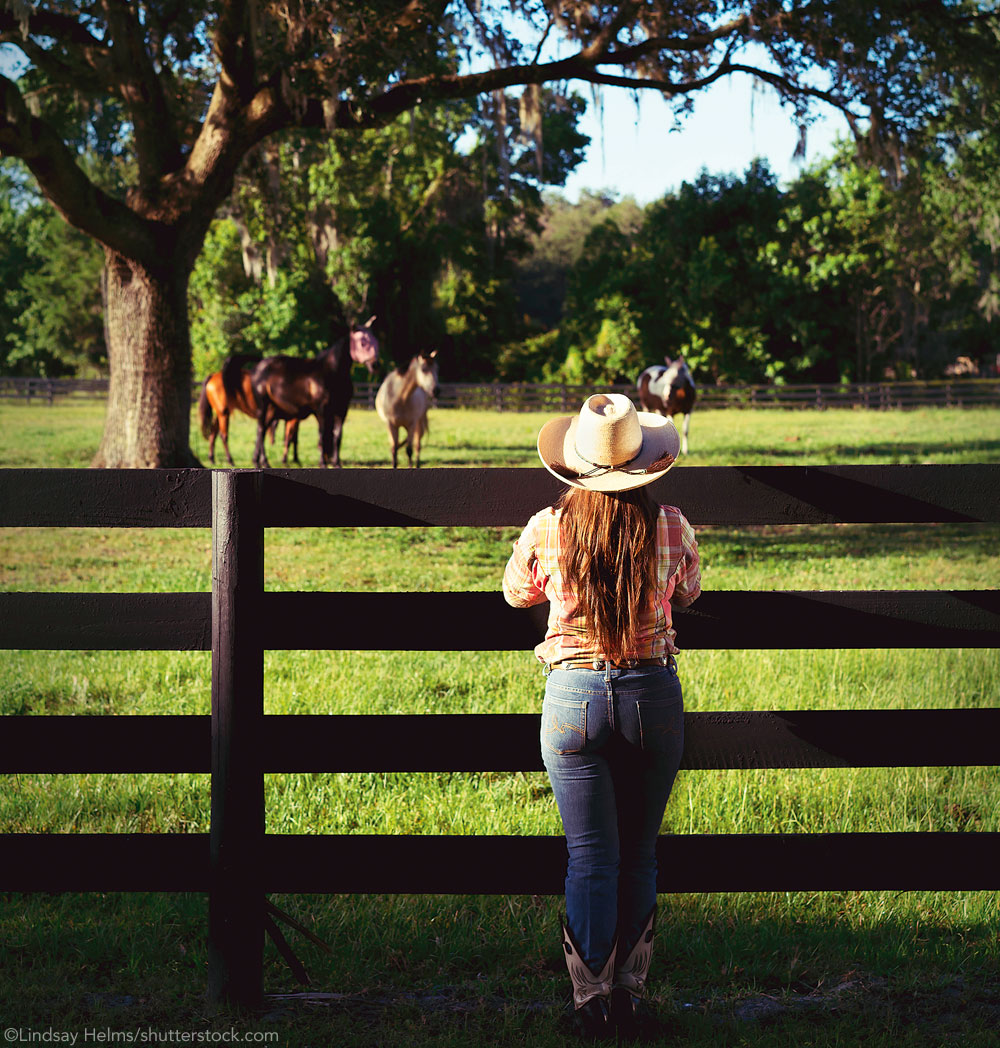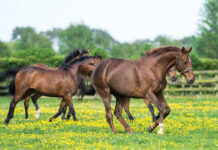
In the saddle, the wind was Diane Welde’s enemy. On blustery days, her Paint gelding, Ringo, would react to every gust with a rapid-fire bolt or a buck.
Fear Itself
Whether it’s apprehension about the weather, fear of falling or reeling from a major accident, every equestrian is afraid of something. And no matter what the cause, fear is something that never really goes away entirely. All equestrians can do is manage it the best they can.
“Everybody is fearful about something,” says Clarissa Cupolo, trainer for Gemini Sport Horses and a specialist at training nervous riders. “It’s natural, and considering the size of these animals, it’s useful.”
In fact, according to competitive rider and equestrian mental skills coach Tonya Johnston, a healthy dose of fear is necessary in order for anyone to engage in equestrian sports in the first place.
“We accept that this is a dangerous sport,” says Johnston. “Fear is a warning to sign to make sure that what we are doing is safe and reasonable.”
But fear becomes a problem when healthy caution gets out of hand and riders stop enjoying the time they spend with their horses, says Joan Caroll-Cronin, BFA, MSW, LICSW, RLP, a certified mentor in sports psychology for equestrian athletes and an equestrian herself. According to Carroll-Cronin, there’s a good reason why fear can become paralyzing.
“The brain is wired to be negative, and negative thoughts are like Velcro,” she says. “Positive thoughts are like butterflies. That’s why one negative memory wipes out 25 positive memories.”
Caroll-Cronin also believes that riders’ fears frequently stem from worry going on outside the barn. This type of anxiety then spills over into riding.
“When we worry about something outside the saddle, such as an issue with a child or a spouse, or an incident that took place at work that day, we set ourselves up to be fearful,” she says. “And you can’t stop a thought simply by saying, ‘Don’t be nervous.’ It’s really challenging.”
Overcoming Fear
So how does a rider beat fear and enjoy the ride? Cupolo says that knowing it’s OK to be afraid is a good start.
“There is a lot of ‘macho’ thinking going on about riding—even among women,” says Cupolo. “Some people have a tendency to minimize it, but really, even professional riders have fears.”
After realizing that fear is generally universal, riders can fight their own anxiety by taking stock of their own reasons for being in the saddle. According to Johnston, riders should begin by having a clear notion of what they expect to gain by hanging out around horses in the first place. In fact, says Johnston, some people are content to simply spend time at the barn with friends or to groom the horse or perform ground work.
“It’s all good, because you’re strengthening the relationship between you and your horse,” she says.
But it’s not so good when grooming or groundwork covers a fear of actually being in the saddle.

Why do You Ride?
Johnston says it’s crucial to know what motivates someone to get in the saddle.
“You have to ask, ‘How much do I want to do this, and is [being fearful] limiting me and what I want to do with my horse?’” says Johnston. “Are you going to spend the next 20 minutes focusing on the weather, or are you going to ride? Because the minute you stop doing what makes you happy, the fear has won.”
Understanding what a rider can and cannot control is crucial. Once in the saddle, any rider is hard pressed to control a neighbor using a grass trimmer next door, or a car backfiring on an adjacent roadway. Nor can equestrians control how their horses might react when they are startled by sudden, unexpected sights or sounds.
“But how we cope with that is our business,” says Johnston. “Remember, trust is a two-way street and the horse will be confused if you don’t lead. And if you don’t lead, you’re feeding your fear.”
What to Do
This is when riders need to find ways control their fear and ride on.
Johnston suggests that equestrians begin by concentrating on themselves—staying body conscious, maintaining their riding position, keeping their heels down and hands correctly holding the reins. And don’t forget to breathe!
“You have to stay in the moment, stay with the horse, and redirect his attention to you,” says Carroll-Cronin.
Still, even using the best strategies, most riders can’t overcome their fears alone. Working with a trainer who has experience helping nervous riders may be preferable, but Johnston believes that any qualified trainer can be helpful.
“You have to get another pair of eyes on you, and the trainer should help you build confidence,” she says. “Do what she recommends so you can leave the barn feeling like you accomplished something.”
Carroll-Cronin reminds riders that when it comes to beating anxiety, they have more power than they think.
“You can move forward or give in to the fear,” she says. “You always have a choice.”
In fact, deciding to meet her fear head-on made all the difference to Diane Welde. She started working with a trainer, began riding her horse even on breezy days, and celebrated even the smallest victories.
“Now Ringo doesn’t react when it’s a little windy, and neither do I,” says Welde. “I never would have thought that was possible a couple of years ago.”
Patrice D. Bucciarelli is a freelance writer based in Florida.







I don’t fell I am a good rider, so perhaps some of these ideas will help me.
I have issues too with this new horse and I am sure he can feel them. So good ideas.
good ideas
Thanks for the ideas.